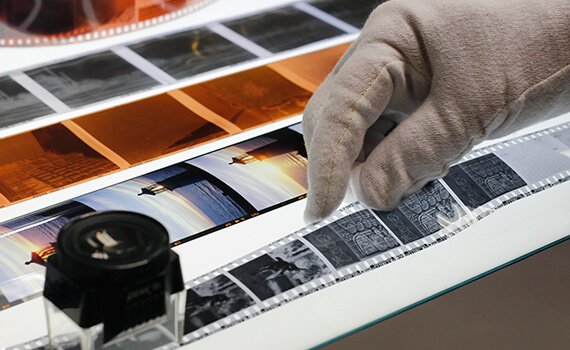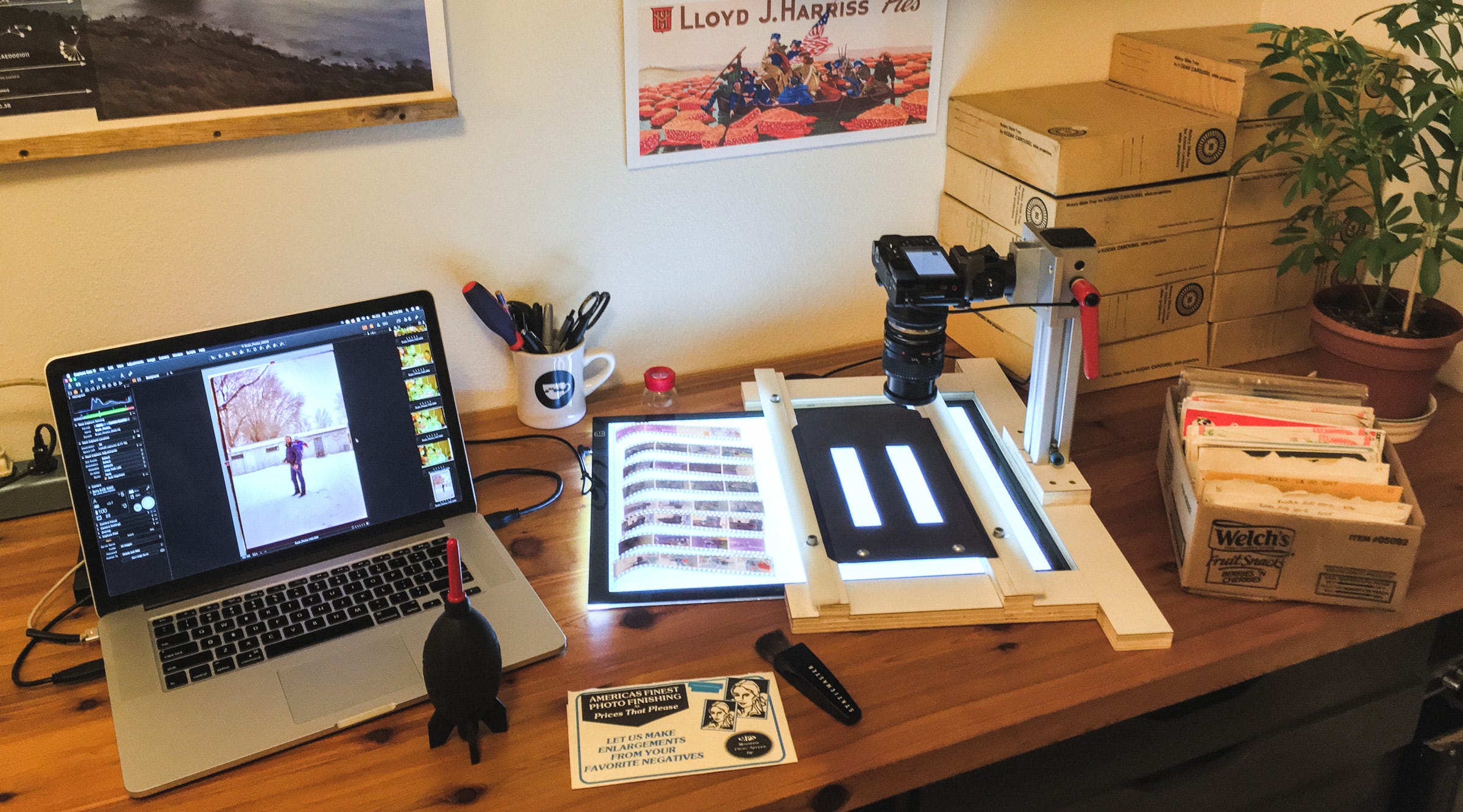
Film Processing
Photographic film is able to record images. In order to make these images visible, the film needs to undergo a number of chemical processes. The result of these processes will either be negatives or slides. This is generally known as developing. Different films need different processes. The process for black and white film is different from that for slide film.
There are different kinds of films. The most common of these is film negative. With negative film, all colors are reversed. This is corrected in an additional step of making a print of each image.
So called reversal film, which is used for diapositives, directly produces positive images (which are framed to become a slide).
This whole process is known as film processing.

Film Scanning
A film scanner is a device made for scanning photographic film directly into a computer without the use of any intermediate printmaking. It provides several benefits over using a flatbed scanner to scan in a print of any size: the photographer has direct control over cropping and aspect ratio from the original, unmolested image on film; and many film scanners have special software or hardware that removes scratches and film grain and improves color reproduction from film.
Film scanners can accept either strips of 35 mm or 120 film, or individual slides. Low-end scanners typically only take 35mm film strips, while medium- and high-end film scanners often have interchangeable film loaders. This allows the one scanning platform to be used for different sizes and packaging. For example, some allow microscope slides to be loaded for scanning, while mechanised slide loaders allow many individual slides to be batch scanned unattended.

Darkroom Processing
A darkroomis used to process photographic film, to make prints and to carry out other associated tasks. It is a room that can be made completely dark to allow the processing of the light-sensitive photographic materials, including film and photographic paper. Various equipment is used in the darkroom, including an enlarger, baths containing chemicals, and running water.
Darkrooms have been used since the inception of photography in the early 19th century. Darkrooms have many various manifestations, from the elaborate space used by Ansel Adams to a retooled ambulance wagon used by Timothy H. O'Sullivan. From the initial development of the film to the creation of prints, the darkroom process allows complete control over the medium.
Due to the popularity of color photography and complexity of processing color film (see C-41 process) and printing color photographs and also to the rise, first of Polaroid technology and later digital photography, darkrooms are decreasing in popularity, though are still commonplace on college campuses, schools and in the studios of many professional photographers.
Other applications of darkrooms include the use in nondestructive testing, such as magnetic particle inspection.


